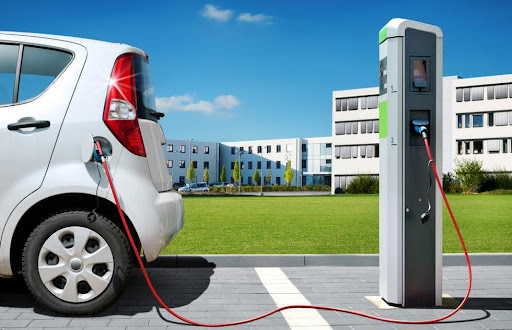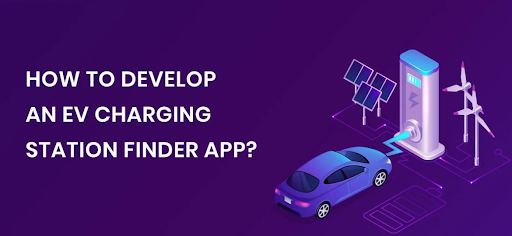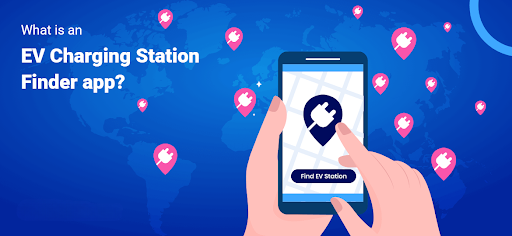How to Build EV Charging Station Finding App?
Electric vehicles (EVs) are gaining popularity rapidly due to increasing environmental awareness and technological advancements. Major automakers are investing heavily in developing affordable long-range EVs. Many countries and states provide subsidies and tax credits to encourage people to switch from gas-guzzling internal combustion engine vehicles to more sustainable electric vehicles. However, a lack of critical supporting infrastructure can challenge the mass adoption of EVs. A robust public EV charging network alleviates anxiety issues that dissuade many from purchasing electric cars. This is where EV charging station finder applications can play a pivotal role by helping drivers locate available chargers seamlessly.
Understanding User Requirements and Mapping the Ecosystem
Before building an EV charging station finder app, it is important to understand users' diverse needs and preferences, like long-distance travellers, local commuters, fleet operators, etc. User research involving surveys and interviews will provide valuable insights into critical features like preferred map layers, charging standards supported, payment methods, availability notifications, etc., that the app should accommodate. It is also necessary to study the complex interactions between numerous entities in the EV charging ecosystem, like automakers, charge point operators, utilities and government agencies, to identify relevant data sources and APIs required. Gathering requirements from multiple stakeholder viewpoints will ensure one designs an inclusive app solution.
Architecture and Major Components of the App
The core components of an EV charging station finder app are:
- Database integrating real-time station and availability updates from diverse data providers.
- Maps displaying chargers geographically with filters for types, speeds, accessibility, etc.
- Search enabling location and criteria-based station lookup.
- Routing helps plot multi-stop trips incorporating charging.
- Booking/payment module supporting reservation and fees.
- Notifications about outages or new nearby chargers.
- Analytics provide fleet operators with insights into usage patterns.
- Administrative console for data updates/moderation.
It is critical to design a scalable, modular architecture that facilitates incorporating additional sources, standards and charging networks over time to keep the app relevant. Open APIs, cloud-hosted databases and microservice-based designs can fulfil such flexibility needs effectively.

Programming Languages and Development Tools
The right programming languages, platforms and tools are key to smooth development and maintenance. Some good options to consider are:
- React Native/Flutter for cross-platform native Android and iOS apps.
- .NET, Python, Node.js, GoLang, etc., for flexible backend logic.
- Postgres, MongoDB, etc., for scalable databases.
- Mapbox Google Maps for dynamic vector maps.
- Firebase for real-time features like booking notifications.
- Docker for containerization; Kubernetes for orchestration.
- Version control with Git; CI/CD pipelines for quality releases.
- API Gateways for secure, monitored edge services.
A technology stack that embraces new advances yet ensures functional reliability should form the development foundation.
Extensive Testing and Continuous Improvement
Before launching the app, extensive validation testing is needed across various user profiles hardware and software configurations. Realistic load testing simulating peak usage scenarios must be done to identify bottlenecks. Security vulnerabilities require scrutiny as the app would handle sensitive location and payment data. Post-release monitoring applications and server logs can recognize faults and input for optimizations. Gathering anonymized usage analytics and user feedback provides opportunities for valuable product enhancements over time to further improve user and operator experience. Seeing the app as an ongoing project enables sustaining focus on quality and priority-based improvements.
Benefits of EV Charging Station Finding App that let users discover charging stations in their area
Reduce Range Anxiety
One major benefit of EV charging station finder apps is how they help reduce anxiety about running out of battery power while on the road. With a few taps, drivers can check the locations of accessible plugs surrounding their vehicle's current or planned location, along with available stalls and charger types. This brings invaluable peace of mind compared to traditional methods like manually consulting maps. The assurance of being able to charge helps boost confidence in taking EVs for all sorts of trips.
Find Available Options Quickly
Unlike fixed gasoline stations, charging infrastructure is still expanding briskly. So, being alerted to recently added or temporary pop-up chargers nearby is handy. Apps track updates from numerous providers, seamlessly surfacing fresh sites on dynamic maps. In real-time, users can identify which stations have occupied docks versus plenty of plugging power available nearby.
Plan Routes wisely
When plotting road trips spanning many miles, seamless multi-stop trip planning integrated within apps now proves their weight in gold. Route previews highlight charging stops automatically spaced out at optimum battery levels to avoid unnecessary waits. Leveraging crowd-sourced comments about each station's amenities and reliability further helps finalize the best journey path. This streamlines vacation drives or commute routines planned days.

Compare station details
Not all charging sites are created equal regarding speed, cost, facilities, or networks supported. Comparison tools within apps empower discerning drivers to select destinations best fitting their needs. Features like viewing power levels, plug compatibility, pricing models, and on-site provisions like stores, washrooms, or cafes aid decision-making. This boosts control over each charging experience.
Save Money
As electricity costs vary per provider and station, apps enabling rate comparisons between nearby options save users money over time. Some integrate payment accounts, too, doing away with coins or cards at stalls. Loyalty programs and bundled plans offering volume-based discounts can similarly lower average refueling outlay when leveraging frequently through apps.
Social Features for Community Feedback
Many apps incorporate social elements that are greatly valuable to drivers. Features like publicly viewing and posting comments on stations allow users to browse collective experiences and provide input for others. This community-driven feedback highlights aspects like maintenance reliability, security, or noisy nearby traffic that traditional lists miss. It helps new EV drivers especially feel more confident about unfamiliar areas.
Conclusion
Building a robust EV charging station finder application requires meticulous planning and development backed by extensive stakeholder collaboration and real-world inputs. Adopting modern, scalable techniques while keeping the user at the forefront offers the best approach to creating a solution that supports rapid electric vehicle adoption. With many countries targeting carbon neutrality in the coming decades, such initiatives have meaningful socio-economic impacts. Continuous innovation will be key to maximizing benefits as the industry ecosystem transforms unprecedentedly.
At Derived Web, we are passionate about continuous innovation. As an innovative IT development solutions company, we are fully equipped to create the best-in-class Electric Vehicle (EV) Charging Station Finder application. With our vast experience in designing and implementing digital solutions, we're prepared to develop a tool that will revolutionize the EV industry.








